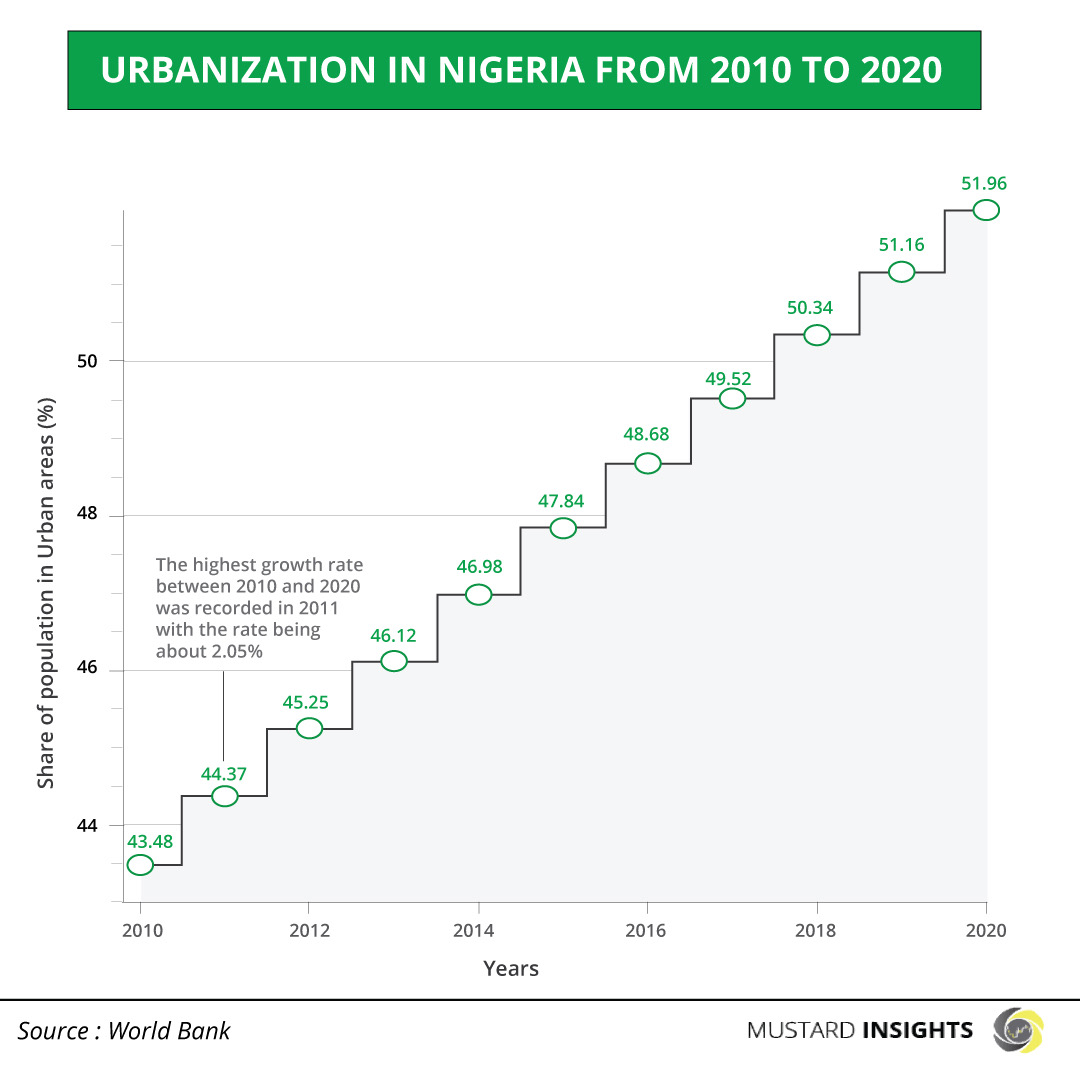The United Nation predicted that the population of Nigeria, currently the world’s 7th largest, is projected to surpass that of the United States and become the third largest country in the world shortly before 2050.

Nigeria’s total population is growing at an alarming rate, averaging 2.64% annually. This increase in population has seen a surge in rural-urban migration within the country. In 2020, annual urban population growth in Nigeria was about 4.1%.
Urbanization is the population shift from rural to urban areas, the complementary decrease in the proportion of a population living in rural areas, and how societies adapt to this change.
Breakdown & Key Metrics
Figures provided by the World Bank show the rate of migration from rural to urban areas as a function of Nigeria’s annual population by percentage in urban areas. Also, further analysis of the data shows the percentage rate of increase in population annually.
Between the years 2010 and 2020, the urbanization rate in Nigeria has been on a steady increase. In 2010, 43.48% of Nigeria’s 158.5 million people lived in urban areas, representing 68.9 million people. By 2011, Nigeria’s population had increased to 162.8 million, of which 44.37% (about 72.2 million) were now occupying urban areas.
The share of population in urban areas increased to 75.2 million in 2012; representing 45.25% of Nigeria’s 2012 population (167.2 million). When Nigeria’s total population increased to 171.8 million in 2013 and 176.4 million in 2014, 46.12% (79.2 million) and 46.98% (82.8 million) of Nigerians were in urban areas,
respectively.
In 2015, 47.84% (86.6 million) of Nigeria’s 181.1 million population occupied urban areas and in 2016, this had increased to 48.68% (90.5 million) of Nigeria’s total population of 186 million. In 2017, 49.52% share of Nigeria’s 190.9 million people, representing 94.5 million people and an increase of 4 million in urban areas.
The year 2020 saw 107 million, more than half, of Nigeria’s total population of 206.1 million occupy urban areas with a population share of 51.96%.
Impact of Urban Migration
Migration from rural cities to urban cities contributes to urban growth, especially when the number of migrants’ inflow exceeds the number of migrant outflow. Since most migrants to the urban areas are often younger on average, compared to the areas of origin, this affects the age distribution of both rural and urban settlements. Average age distribution in rural areas increases while age distribution in urban areas decreases.
Urbanization has its advantages, such as industrial growth, increased access to employment opportunities, access to better health care, education, etc. The disadvantages of urbanization include pollution and waste disposal problems, an increase in crime rate and slum creation, among others.
Takeaway
Urbanization in Nigeria is a growing issue given an annual urban population growth of 4.1%. By 2037, experts predict urbanization in Nigeria will be twice its current population and point to Nigeria having five of Africa’s 30 largest urban settlements on the continent.
The United Nation predicted that the population of Nigeria, currently the world’s 7th largest, is projected to surpass that of the United States and become the third largest country in the world shortly before 2050. This suggests that the projected increase in population will trigger urbanization and this may subsequently pose greater development and environmental challenges.
Thoughts?
We won't share your email address. All fields are required.
